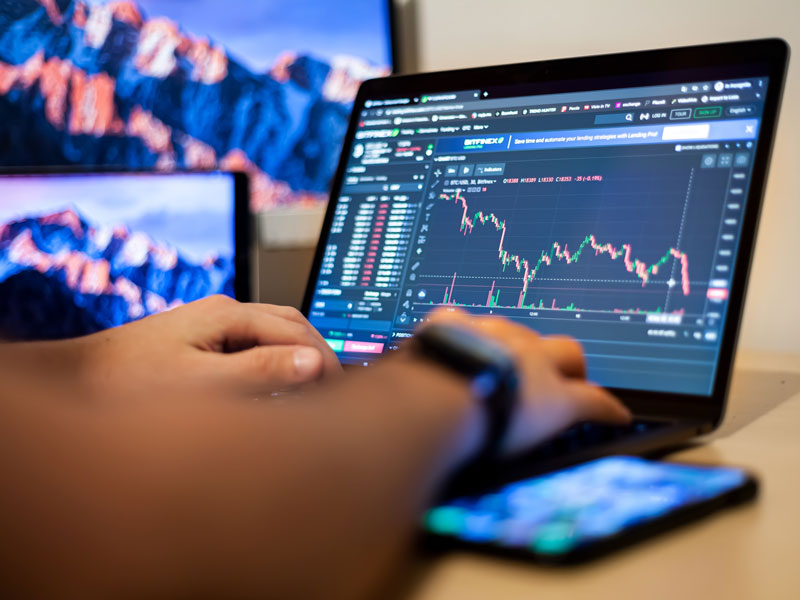
Forex trading has evolved tremendously over the past few decades, transitioning from traditional methods to a more automated and sophisticated approach. The rise of technology has paved the way for automatic forex trading systems, which allow traders to automate their trading processes and leverage the power of algorithms. For those looking to delve into this exciting realm, automatic forex trading latam-webtrading.com offers comprehensive resources and tools to enhance your trading experience.
What is Automatic Forex Trading?
Automatic forex trading, also known as algorithmic trading, is the use of computer programs and algorithms to execute trades based on predefined criteria. These programs analyze market data and make split-second decisions, enabling traders to capitalize on market opportunities without constant monitoring. This method not only saves time but also removes the emotional component of trading, which can often lead to irrational decisions.
The Advantages of Automatic Forex Trading
The primary benefit of automatic forex trading is its ability to enhance efficiency and effectiveness in trading strategies. Here are some of the key advantages:
- Speed: Automated systems can execute trades in a fraction of a second, seizing opportunities before a human trader can respond.
- Consistency: Algorithms follow a set of rules without deviation, ensuring that trades are executed based on the strategy rather than emotions.
- Backtesting: Traders can test their strategies against historical data, refining them before applying them in real-market conditions.
- Diversification: Automated trading allows for monitoring and trading across multiple currency pairs simultaneously, reducing risk through diversification.
- 24/7 Trading: Automated systems can trade continuously, taking advantage of the forex market’s round-the-clock activity.
How Automatic Forex Trading Works
Automatic forex trading systems operate based on algorithms that analyze parameters such as price, volume, and volatility. Here’s a breakdown of the process:
- Strategy Development: Traders create a trading strategy that defines entry and exit points, risk management rules, and other parameters.
- Algorithm Creation: The defined strategy is then translated into an algorithm that a trading platform can recognize and execute.
- Backtesting: Before implementing the strategy in a live environment, traders backtest it against historical data to measure its effectiveness and potential profitability.
- Execution: Once validated, the algorithm executes trades automatically based on real-time market conditions.

Choosing the Right Automatic Trading Software
With the proliferation of automatic trading software, selecting the most suitable platform can be overwhelming. Here are some factors to consider when choosing a trading system:
- User-Friendly Interface: The interface should be intuitive, allowing both novice and experienced traders to navigate easily.
- Customization Options: Look for software that allows for strategy customization, so you can tailor it to your trading style.
- Reliability: Opt for platforms with high uptime and robust customer support, ensuring that your trading remains uninterrupted.
- Costs: Consider the costs associated with the software, including subscription fees and commissions on trades.
- Integration: Ensure that the software integrates seamlessly with your existing systems and broker accounts.
Key Strategies in Automatic Forex Trading
When venturing into automatic forex trading, understanding key strategies can enhance your success. Some prominent strategies include:
1. Trend Following
This strategy involves identifying and following the prevailing market trend. Algorithms can be programmed to buy when prices are rising and sell when they are falling. Simple moving averages or other trend indicators often assist in this strategy.
2. Arbitrage
Arbitrage takes advantage of price discrepancies across different markets or instruments. Automated systems can swiftly identify these opportunities and execute trades to profit from the differences.
3. Mean Reversion
Mean reversion strategies are based on the assumption that prices will revert to their average over time. Algorithms can be designed to buy when prices are below the average and sell when they exceed it.
4. Breakout Trading
This strategy focuses on identifying price levels where significant movements are likely to occur. Automated systems can recognize breakouts and execute trades based on predefined criteria.
The Impact of Artificial Intelligence and Machine Learning
Artificial intelligence (AI) and machine learning (ML) are changing the landscape of automatic forex trading. These technologies enhance the capability of trading systems by enabling them to learn from past data, identify patterns, and predict market movements with greater accuracy. Here are some ways AI and ML are influencing forex trading:
- Predictive Analytics: AI-driven algorithms can analyze vast amounts of historical data to predict future price movements, improving the accuracy of trading decisions.
- Adaptive Strategies: Machine learning models can adapt to changing market conditions in real-time, optimizing the trading strategy for current dynamics.
- Sentiment Analysis: AI can analyze news articles, social media, and other sources to gauge market sentiment and incorporate that data into trading strategies.
Risks and Considerations
While automatic forex trading presents numerous advantages, it also comes with inherent risks. Traders should be aware of the following considerations:
- Market Volatility: Sudden market changes can impact the effectiveness of automated systems, potentially leading to significant losses.
- Over-optimization: There is a risk of over-optimizing an algorithm based on historical data, which may not perform well in live trading conditions.
- Technical Failures: Software bugs, connectivity issues, or other technical failures can disrupt trading and lead to missed opportunities or losses.
- Risk Management: Even automated systems require effective risk management strategies to protect capital. Traders should monitor their algorithms and set stop-loss levels to minimize losses.
Conclusion
Automatic forex trading is transforming the way traders approach the forex market. With the ability to execute trades swiftly and consistently, these systems offer significant advantages in today’s fast-paced trading environment. As technology continues to evolve, integrating artificial intelligence and machine learning will only enhance the effectiveness of forex trading strategies. However, it’s crucial for traders to remain aware of the risks involved and to approach automatic trading with well-researched strategies and sound risk management practices.
